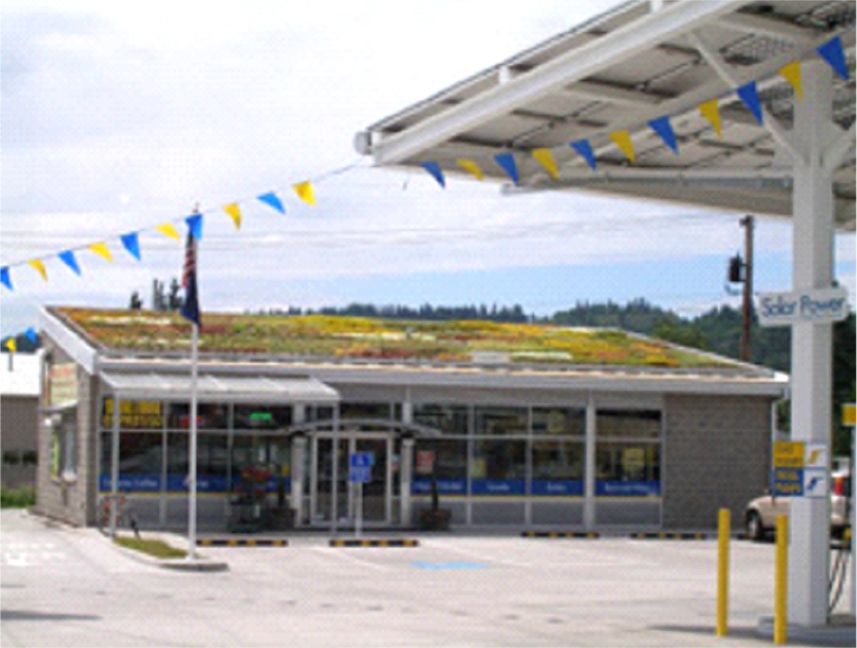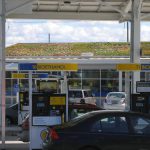
Additional Resources
To learn more about SeQuential Biofuels, please visit www.sqbiofuels.com, and the website for Habitats, Inc., here: www.Habitatsinc.com. See the case study about SeQuential Biofuels from Energy Design here. Read Greenroofs.com’s “GPW: SeQuentials Biofueling Retail Station” by Linda Velazquez in the Sky Gardens Blog of May 20, 2011 and these articles: Statesman Journal’s “Willie Nelson welcomes biodiesel plant” by Dennis Thompson Jr. of August 30, 2008; Home Power Magazine “Fueling a revolution” by Claire Anderson of December 2007 & January 2008; and Biodiesel Magazine’s “The Biofuels Celebration Station” by Ron Kotrba of May 25, 2007.
Completed in September, 2006, the SeQuential biofuel station is a demonstration in realistic, feasible, and sustainable technologies featuring examples of real world solutions that reduce energy usage and impacts on local water quality. These features include solar panels on the fuel pump canopies, passive solar design of the convenience store, and a vegetated roof that is part of a site-stormwater system including bioswales and a detention pond. In addition to being project managers, Habitats staff designed the fuel station site plan, landscape and stormwater features, and designed, installed and planted the vegetated roof. They researched available grant funding, explored LEED certification and worked with local and state planners to secure permits for the project.
AWARDS: Oregon Department of Environmental Quality/Oregon Economic & Community Development Department Award; Environmental Protection Agency Phoenix Award for underground storage tank development with special recognition for energy innovation; Eugene People’s Choice Award (2nd Place); Eugene Colleagues Choice Award (AIA & ASLA local chapters competition).
Living Roof:
The plants and soil on the living roof (2:12 roof slope) absorb rainwater like a sponge, releasing it slowly to the bioswale on the ground. The living roof contains over 4800 individual plants in 5 inches of soil. The layer of plants and soil reflects sunshine and acts as insulation, keeping the interior building space cooler during the summer months.
Bioswales:
The station is located on a former brownfield that had been a gas station years ago. SeQuential’s goal was to remediate the site, leaving it clean for future generations. With the Willamette River only a few thousand feet away, SeQuential paid serious attention to designs that considered soil and water quality. Installing bioswales was a key solution. Rainwater carries pollutants and sediments into the bioswale from roadways and parking areas. The bioswales catch the rainwater, slow its flow, and hold the water on site. The plants in the bioswale filter toxic pollutants and sediments out of the rain water. Microorganisms in the soil then break down toxic pollutants.
SeQuential’s Biofueling Retail Station calls themselves “the coolest fueling station in the world! We operate a unique business serving organic coffee, natural food, and locally made biofuels, all using solar panels and a green roof!”
 Greenroofs.comConnecting the Planet + Living Architecture
Greenroofs.comConnecting the Planet + Living Architecture














